 | E-mail to Birds Korea |
 | KWBS |
in the Region
 | The Oriental Bird Club |
 | BirdLife International (Asia) |
January
In occasional periods of extreme cold many smaller rivers and reservoirs freeze over. Temperatures often drop to -5°C at night, and stay near freezing in the day. Periods of light snow and severe cold are usually followed by milder temperatures for a few days, and then severe cold again.
Mid-winter specialties include Baikal Teal (in often huge concentrations) and Scaly-sided Merganser, Swan and Lesser White-fronted Goose, Steller’s Sea Eagle, Relict and Saunders’s Gulls and Solitary Snipe! Red-crowned and White-naped Cranes and Cinereous Vultures are concentrated in the Cheorwon basin, with Hooded Cranes at Seosan and Suncheon in the south, and huge numbers of ducks and geese at the Geum and in Haenam. Milder conditions on the southern island of Jeju allow species like Black-faced Spoonbill, White’s & Pale Thrushes, and even taivana Eastern Yellow Wagtails to over-winter. On the East coast, there are plenty of gulls to check through, and favoured seawatching areas such as the Guryongpo peninsula and north Gangwon Province provide chances to see Yellow-billed Loon, Long-billed Murrelet and Spectacled Guillemot along with occasionally large numbers of Ancient Murrelet and smaller groups of Rhinoceros Auklet.
National highlights in recent years have included Lesser Whitethroat, Asian Rosy Finch, Red-crested Pochard, and White-bellied Green Pigeon.
Recent Korean firsts in January have included a Plumbeous Water Redstart at Daejon in 2006, a Desert Wheatear at Pohang in 2008, and in 2009 the first and second records of King Eider, both on the East coast.
(The following records are a compilation of our own sightings and records sent in by other observers. As well as being posted on the Birds Korea website(s), selected records are also forwarded to other Korean-language birding websites; records of threatened species are arranged and forwarded to Birdlife International and national authorities when appropriate; flag images and records are passed to bodies responsible for their coordination throughout the flyway; and all records sent to us are used to compile annual reports and to support the evolving understanding of the status of many of Korea’s birds.)
Halla Arboretum, January 31
In a nice patch of mixed pine and deciduous woodland, up to 50 Japanese White-eye, c. 25 Yellow-throated Bunting, 4 or 5 Pale Thrush, several Japanese Bush Warbler, 2 Red-flanked Bluetail, Siskins, a White's Thrush, Coal Tits and a patrolling Northern Goshawk, among other commoner species.
Jeju, January 30
With birding hampered by two days of continual downpour, today a quick look only at Seogwipo harbour area revealed 1 Pacific Reef Egret and a fishing Osprey.
Songdo, January 27
At first sight, of the lagoon area, I didn't think I would be able to find anything to id through the binoculars or take a shot of (camera wise). In the dry reeds I was able to have good views of 1 Siberian Accentor, 3 Yellow-throated Bunting, 2 Common Buzzard, 1 Common Kestrel, and 1 Japanese Grosbeak.
As I was making my way to the brackish area, I watched, 1 Common Buzzard (presumably one of the two I spotted at the lagoon) buzz a large group of ducks consisting of: Mallard, Spot-billed Duck, Northern Shoveler, and Pintail. The major highlight of the day was seeing both a small mixture of 8 Ruddy Shelduck interwoven with a large group of 80+ Common Shelduck and 3 Northern Harrier patrolling the outer edge reed beds, next to the new super-highway.
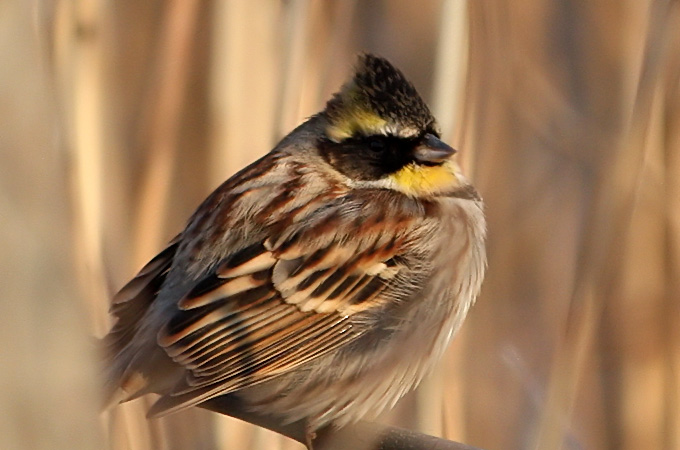



Shiwha, January 25
Temperatures of -8 and a snowstorm cleared to reveal a picturesque winter scene along the southern side of Shiwha lake, where good scope views of a Male and female Long-tailed Duck, with a second male reported earlier (SKS).
Also noteworthy was a gathering of no less than 11 White-tailed Eagle on the ice, a Chinese Grey Shrike and close looks at 2 Common Reed Bunting.
Otherwise, a hunting female Hen Harrier, 20+ Chinese Penduline Tit,a Peregrine and c.15 Pallas's Reed Bunting.
Several thousand Greater Scaup are still bunched in rafts, with now perhaps 800 Tufted Duck, 2000+ Common Pochard:lesser numbers also of Gadwall and Goldeneye, with a handful of Falcated Teal, Eurasian Wigeon, 4 or 5 each of Buff-bellied Pipit, Northern Skylark, 15 Whooper Swan and single numbers of Smew.
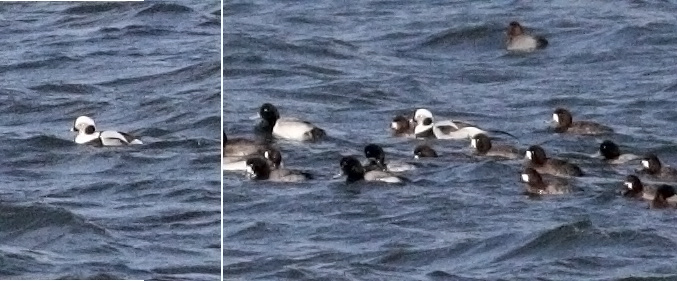


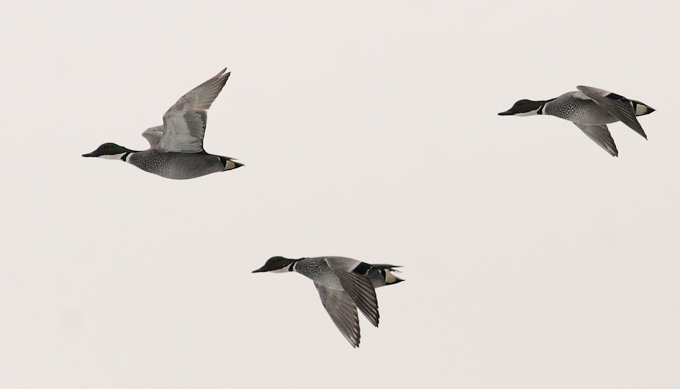

Dobongsan, January 25
My search, in the middle of intermittent snow flurries, for Alpine Accentor failed. Nonetheless, I did not leave Dobongsan list-less (bird wise). I encountered very nice views of 6 Naumann's Thrush, 12 Eurasian Nuthatch, and 4 Japanese Pygmy Woodpecker.


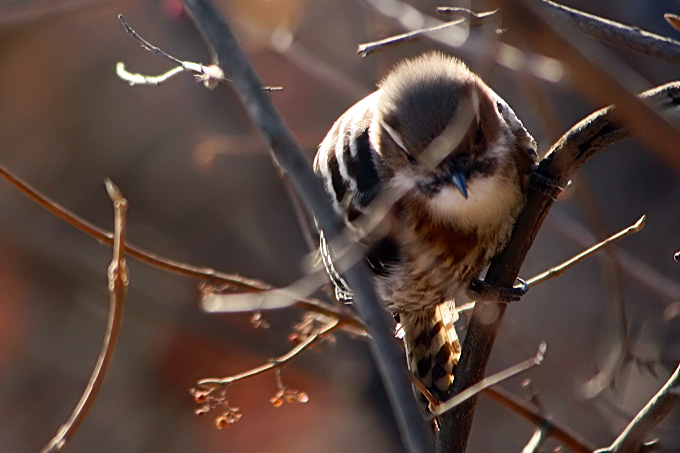
Kodangbong, January 21
In foul weather at Geumjeongsan, looks at 17 Asian Rosy Finch and 2 exceedingly tame Alpine Accentor- although blizzard conditions prevented any photographs.
Uljin, January 20
Best at Jukbyeon port, 1000+ Rhinoceros Auklet offshore, with lesser numbers of Ancient Murrelet mixed in, plus 1 Long-billed Murrelet. Most intriguing were brief views of an all-black auklet in flight, appearing c.30% smaller than the Rhinoceros Auklets it was flying with (NM only).
Between Jukbyeonhang and Onyang-ri, c.300 Red-necked Grebe: also a good scattering of Arctic Diver, 4 Harlequin, 2 White-winged Scoter,4 Goldeneye, plentiful Red-breasted Merganser, Black-necked and Great Crested Grebe (which included one albino), 8 Grey Starling and 1 Japanese Wagtail on the beach.
Geojin, January 19
Close views today of an approachable female King Eider bathing and wing-stretching: this is likely the same individual seen a touch further down the coast at Iajin on the 11th: it has been here at Geojin since january 16th.
Also good views of a close Red-necked Grebe: further out, a handful of Goldeneye, Goosander and Red-breasted Merganser. In the harbour, a good mix of Black-legged Kittiwake, Slaty-backed, Common and Vega Gulls, with one 2nd winter Glaucous-winged Gull.

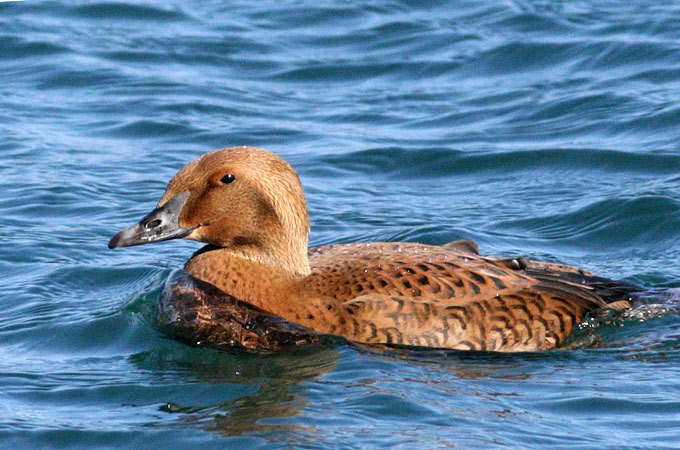


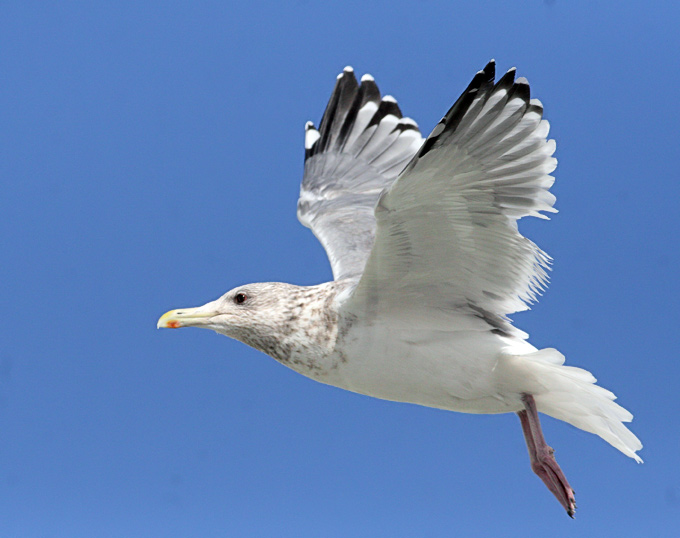
North of Uljin, January 18
Along with 9 other members of the KWBS, success in refinding and photographing the male King Eider, first reported there on 17th. This is the second record for Korea, following on very soon after Korea's first (a female) found on January 11th, c. 100--150 km to the north.
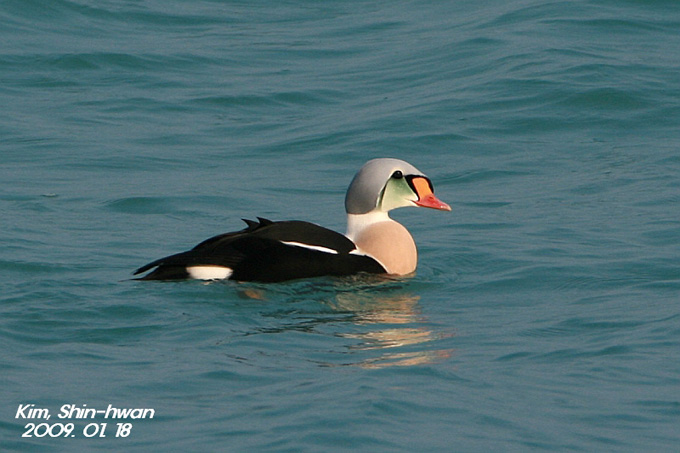
Seogwipo, Jeju island, January 17
A glorious warm day for birding in Seogwipo. Over the harbor, an Osprey hovered and glided for several minutes, while a Black-throated Loon bobbed in the water close to shore. Two flocks of about 20 Dusky Thrush were seen in bushes overlooking the harbor.
A short distance away, there was a lot of bird activity in a ‘resting place’ along a small river. Common and Green Sandpipers, a Striated Heron, several Spot-billed Ducks and a Common Kingfisher were spotted in and around the river. Both White and Grey Wagtails, and Olive-backed Pipits paced on the grass nearby.
In the trees and bushes nearby, a Yellow-browed Warbler was seen near some Japanese Bush Warblers, while Japanese White-eyes moved actively through the tree tops.


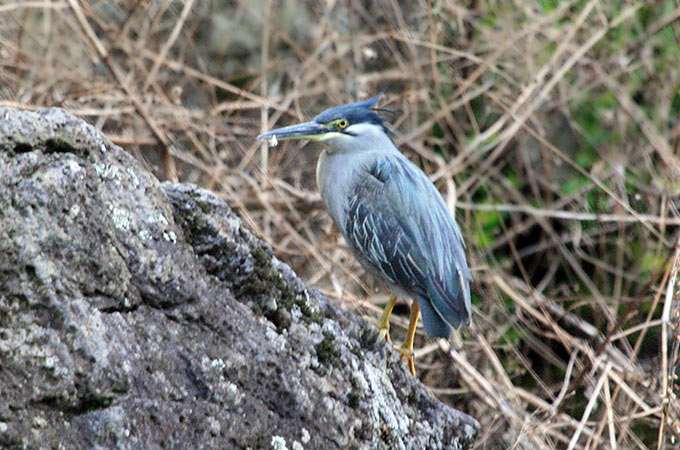

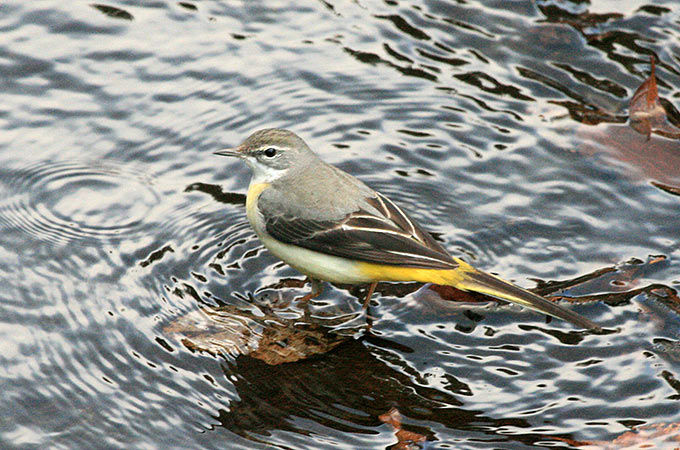
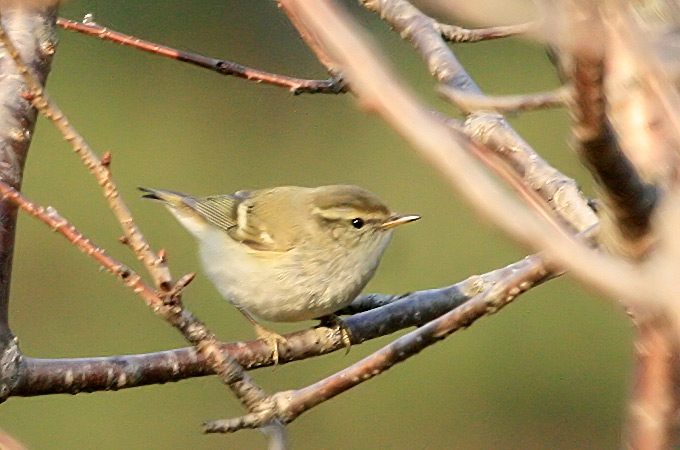
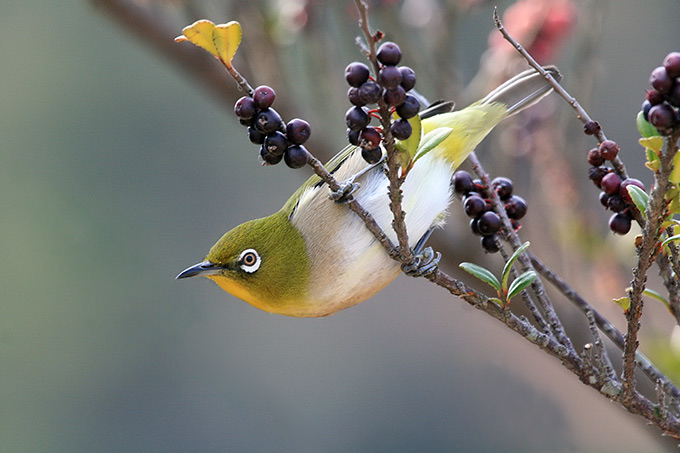
Iajin Port, East Coast
Most noteworthy news concerns Korea's first King Eider Somateria spectabilis, (a female), photographed by Kim Seok-Min at Iajin Port, East Coast on January 11th. Images of this individual can be viewed on the KWBS website here: http://www.kwbs.or.kr/bbs/board.php?bo_table=kwbs_news&wr_id=74
A flock of up to 20 Asian Rosy Finch Leucosticte arctoa, present since late December 2008, has been viewed by multiple observers through January: most recently seen on January 16th (NM) -when 17 were present. Also notable, three Long-tailed Duck Clangula hyemalis were seen at Shiwha lake by Kim Seok-Min on January 7th, with two seen by most observers between January 4th and 14th: images can be viewed on the birddb website here: http://www.birddb.com/bbs/board_read.php...Clangula*hyemalis*Oldsquaw[Long-tailed*Duck]
Yeongjeong Island, January 17
Locating the frozen northern reservoir on foot involved a long hike and barefot wade through an icy stream: I was however rewarded with 3 elegant Mute Swan (loosely associating with 21 Whooper Swan), and an Oriental White Stork which unexpectedly flew directly overhead.
Predictably good numbers of Falcated Teal (110), Coot (245) were present, with lesser numbers of Eurasian Wigeon (6), Common Pochard (1), Pintail (65) and 1 White-tailed Eagle sitting on the ice. Also frequenting the general area, 2 Northern Skylark, 2 Oriental Greenfinch and a Blue Rock Thrush.
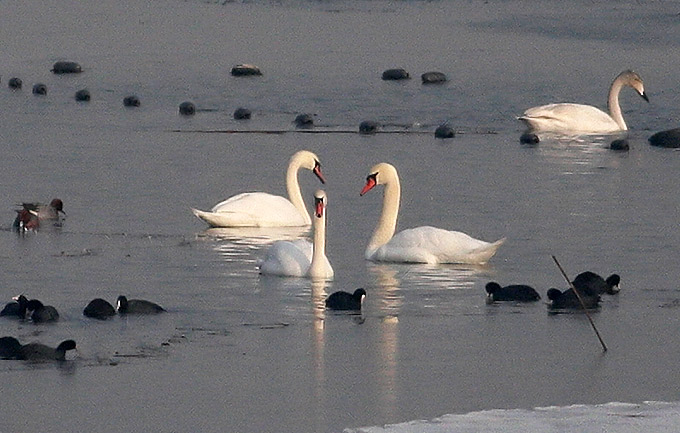


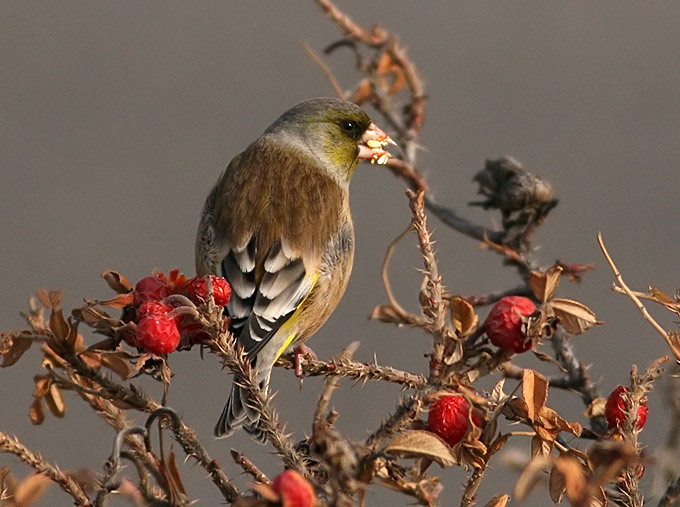
Gumjeongsan, Busan, January 16
In glorious sunshine, with temperatures several degrees above freezing and only light winds, an afternoon hike towards the Asian Rosyfinch site. At least 17 Asian Rosyfinch still present, as were two exceedingly confiding Alpine Accentor, perhaps easy prey for the large population of stray cats that also inhabit the rocky crags, a life made possible by people carrying cat-food up the mountain for them. Other birds of note between South gate and North Gate included a single Northern Goshawk, a singing male Red Crossbill, several Meadow Bunting, and one Siberian Accentor heard.
Ganghwa Island and Yeongjong Island, January 14
With an overnight low of -7C and moderate to strong westerly winds, a search for shorebirds and gulls at two key northwestern sites on frozen tidal-flats over a very good high tide. At Ganghwa, only 11 Dunlin and 2 Grey Plover found, whilst no shorebirds at all were found on Yeongjong, with the main roost there now suffering from extensive construction.
Species of most note during the day included one Red-crowned Crane in SE Ganghwa and a flock of 7 Red-billed Starling at Mani San; 10 Saunders's Gull, 4 White-tailed Eagle and 66 White-naped Crane in one scan on the Han River (near Paju), with at least 7 more White-napeds seen a little further northwest; and 15 Red-crowned Crane in one scan from the expressway bridge in the saltmarsh north of Yeongjong.
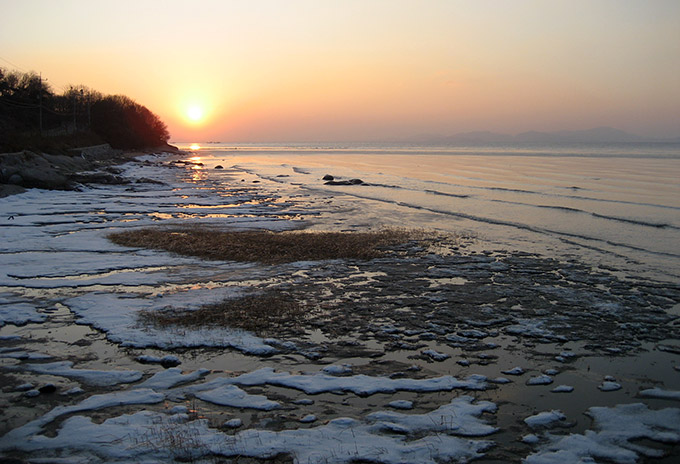
Seongsan po, Hadori and the Halla Arboretum, January 13
Still windy, cold and snowy, but with occasional sunny periods. Highlights included a Great Spotted Eagle, 2 taivana Eastern Yellow Wagtail, a Little Ringed Plover (exceptional in winter, and possibly the first to be fully documented at this time of year?), and 15 Black-faced Spoonbill at Seongsan Po; excellent views of several Japanese Bush Warbler, 3 or more Black-faced Spoonbill and a non-breeding plumaged Chinese Pond Heron at Hwajin Po; and between 10 and 15 Grey and 3 or 4 Tristram's Buntings in a large mixed flock at the arboretum.
Jeju City and Hwajin Po/Seongsan Po, January 12
In heavy winds and driving snow showers, the first of two days for half of the group on subtropical Jeju. Approximately 72 species logged in total, including 2 extremely confiding White's Thrush, 4 distant Pacific Reef Egret (disappearing in the snow...), and 14 Black-faced Spoonbill were the obvious highlights, with a flock of 300 Grey Starling in Jeju City also notable.

Song Do-Sorae-Oido, January 11
Our survey of shorebirds and gulls continues, this time covering the remaining areas of Song Do tidal-flat. Once vast, the area that remains is now flanked by seawalls and construction sites, and despite the formal promise of no more large-scale reclamation nationwide, much of that which remains is slated for destruction. To this very depressing background and in subzero conditions, 584 Saunders's Gulls were logged during the day, as was a single adult Relict Gull. Further birds of note included possibly up to 3 Upland Buzzard, a Rough-legged Buzzard, and a Chinese Grey Shrike near Oido.
Paldang/Deoksu, January 11
It was a relatively cold but sunny day at Paldang. Nothing out of the ordinary, considering the winter resident species that visit this water playground. My highlights of the day included 2 playful Japanese Wagtail, 4 White-tailed Eagle, 1 Steller's Sea Eagle, 50 Whooper Swan , and 14 very picturesque Eurasian Wigeon.
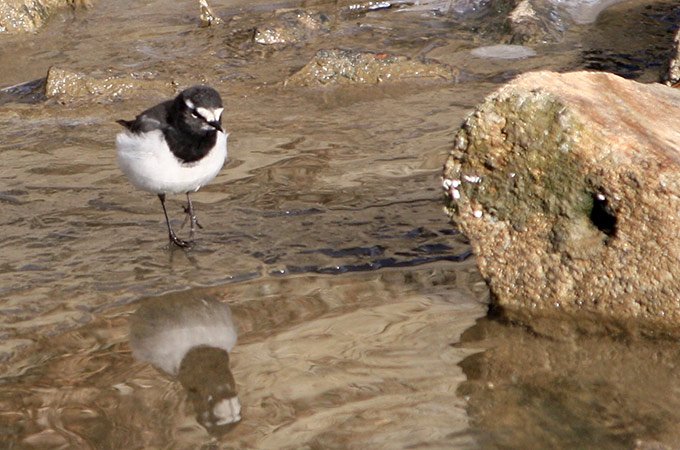
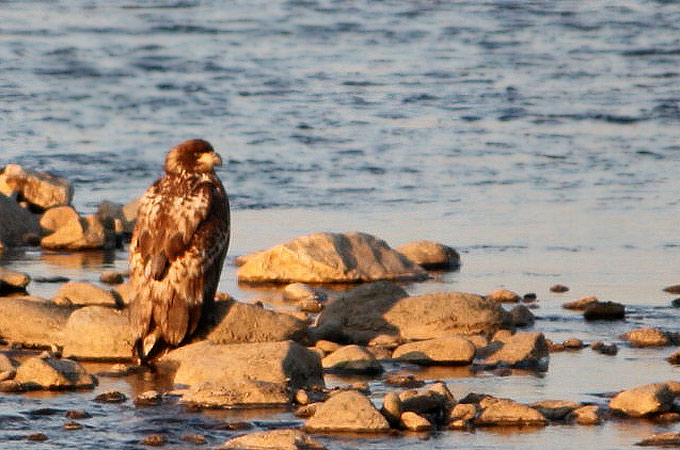


Seosan, Asan Bay and Namyang Bay, January 10
The morning at Seosan was largely unproductive, with best being very long range views of the 5 Oriental Stork and a White-tailed Eagle. At Asan Bay, within a vast reclamation complex, 278 Saunders's Gull, while a high tide roost within the Namyang Bay reclamation lake contained 184 Saunders's Gull, 2718 Eurasian Curlew, 1500 Dunlin and 139 Eastern Oystercatcher. Also of note there, 2-3 Northern Goshawk, including a massive female sitting close to the car.
Seosan, January 10
With much ice cover and strong winds, remarkably few birds generallly around both frozen lakes. Best near lake A, a Golden Eagle loosely frequenting with 2 White-tailed Eagle, which soared past 5 circling Oriental White Stork. Also noteworthy 22 Hooded Crane, 13 Eurasian Spoonbill, 10 Dusky & 1 Naumman's Thrush: 2 Moorhen, a Northern Goshawk, a Buff-bellied Pipit and especially good numbers of Coot. By the lake wall, Red-breasted Merganser were quite plentiful. Among the more commoner species, a Spot-billed Duck was (unusually?) seen to lunge across the water and pounce on a fish, which it quickly swallowed.
Sadly, concreting of former streams and reedy ditches continues apace: waterways once full of fish, frogs, birds and reeds transformed into lifeless trenches- along with various other development projects. Notably very few, small and fragmented flocks of Tundra Bean & Greater White-fronted Geese now in evidence.
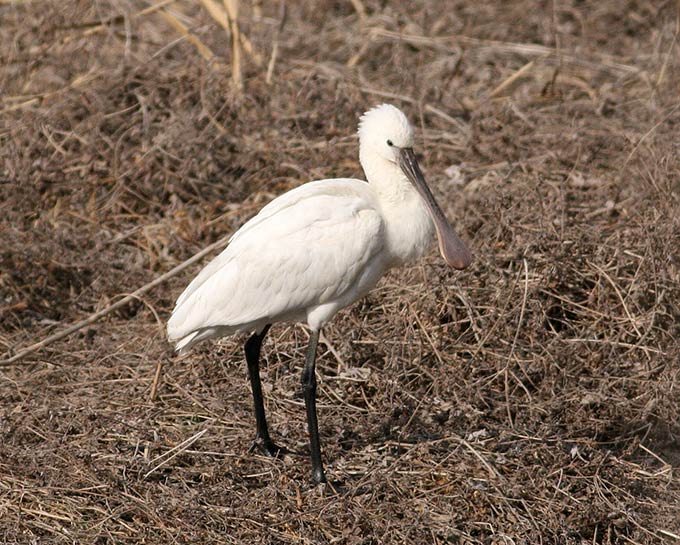
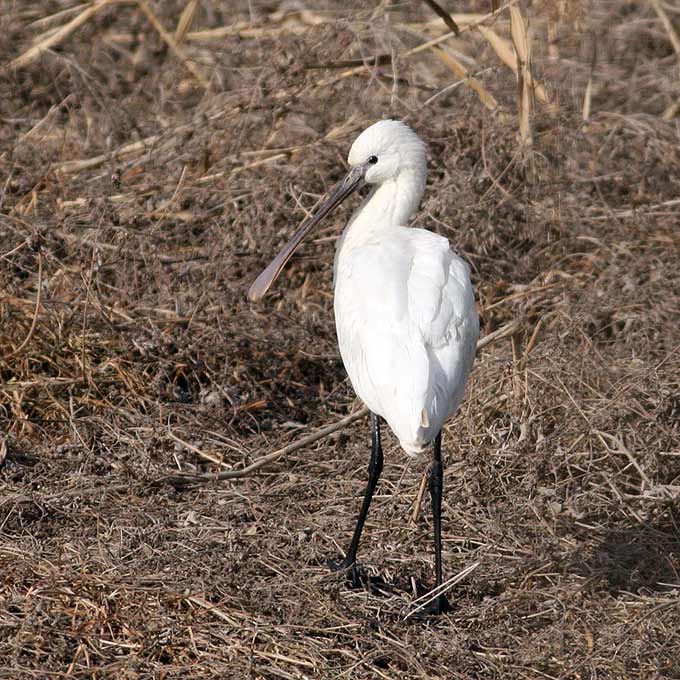
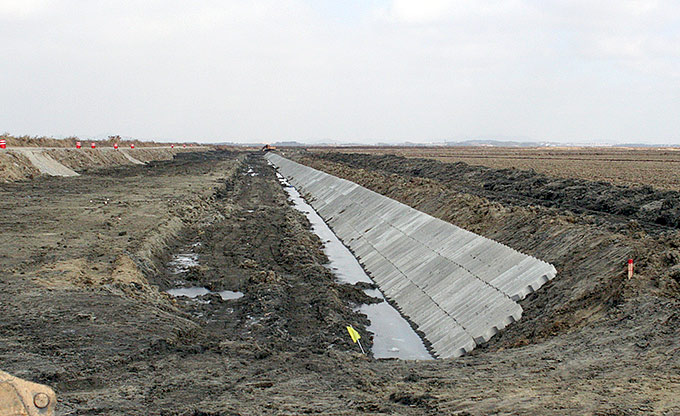
Kumjeongsan, Pusan, January 9
A bald-faced (-headed?) twitch of Pusan’s new celebrities found 18 Rosy Finches roving restlessly around the peak and its approaches. One or two Alpine Accentors made an occasional appearance.




Imjingak AM/Seosan, January 9
Another very good day despite the cold (with an overnight low of -12C and a high of only 2C). At Imjingak, at least 230 Hawfinch (including >100 in a single tree, briefly), single Merlin (catching a Rustic Bunting from in front of the car), and the rarest of the day (from a Korean perspective) a Cackling Goose. Based on its very small size, extremely short neck, very short and stubby bill, extensive white cheek patch and dark breast, identification as a minima is suggested. En route to Seosan, very small numbers of White-naped Crane were seen in the Han River in Paju, along with 3 White-tailed and one probable first year Steller's Sea Eagle. At Seosan, highlights of the shorebird and gull survey included more than 270 Saunders's Gull and one second winter cachinnans/barabensis type gull. Next to Lake A, much dredging and concreting of channels, but still 5 Oriental Stork on the lake, and c. 42 Hooded Crane.
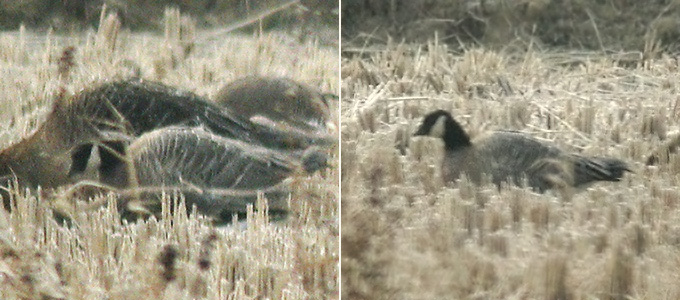
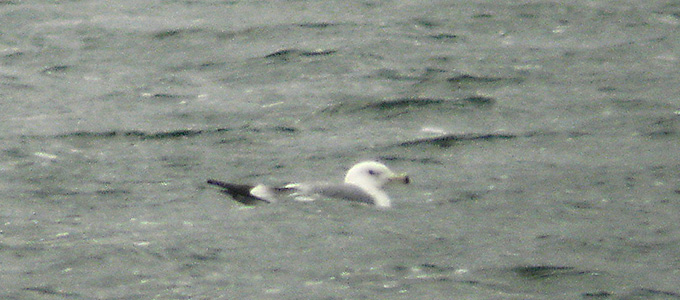
Hwaseong-Gun/Shiwha, January 8
Reclaimed former mudflats at Hwaseong are now an ocean of reedbed and grasses as far as the eye can see- an incredibly bird-rich habitat, if only least temporarily (as construction projects are underway throughout the area). However, right off the bat, a Great Bittern in flight was followed by a lovely male, then 2 female Hen Harrier. Squabbling over a duck carcass were 2 White-tailed Eagle. With most freshwater frozen, wildfowl crowded onto the lake in spectacular concentrations. Notably at least 8950 (roughly counted) Greater Scaup massing in several large rafts and smaller flocks. Conservative estimates included c.10000 Mallard, 2000+ Goldeneye and a similar number of Common Pochard,1800 Coot, c. 1300 Gadwall, 600+ Tufted Duck, 500 Eurasian Wigeon, and lesser numbers of Common Shelduck, Pintail, Goosander, several Red-breasted Merganser, c. 300 Falcated Teal, and a handful of Smew. At waters edge on the far side of the lake, a flock of about 70 distinctly long-necked Taiga Bean Geese: also 81 Whooper Swan. Rarest for the day, a single female Red Crested Pochard seen well.
Cheorwon, January 8

Photo © Nial Moores
In beautiful and sunny if slightly chilly weather (min. minus 13C, maximum plus 1C), another excellent day, with at least one major surprise...In total during the day over 100 Red-crowned Crane and a similar number of White-napeds, a male Red-throated Thrush (only seen by and photographed by TL), at least 4 White-tailed Eagle and c. 100 Cinereous Vulture, 2 Siberian Accentor, 3-4 Long-tailed Rosefinch (including a superb male) and probably over 100 Hawfinch. Outstanding highlight came late in the afternoon. A search for passerines in a bird-rich valley led to NM and ST finding a first-winter Eurasian Redwing Turdus iliacus (which was then seen by KK, HK and JL). Although vocal the bird was rather skulking.
NM managed some very poor images, and KK a rather clearer one, showing all the necessary features for a confident identification of this species, very familiar to all observers from Europe. This is only the second record for Korea, with the first one seen only in flight by NM on Socheong on November 6th 2006. The species will be added to Category One of the Birds Korea Checklist in the next Update (February 2009).

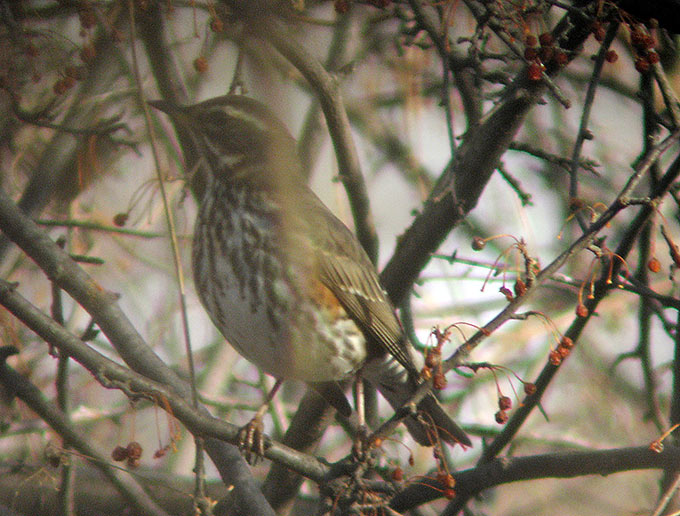
Dobongsan (North Seoul), January 7
A hike (sans camera this time) up to peaks last visited 2 years ago; the regulars all there, especially 6 Alpine Accentors at the top; other highlights were 1 “white-headed” or (less accurately?) caudatus Long-tailed Tit associating with a flock of the predominate europaeus-magnus, a dozen Eurasian Nuthatches, a briefly seen Common Buzzard with a remarkably rufescent head, and great views of a White-backed Woodpecker.
Namhansan & Han River (East Seoul) & Arboretum, January 7
Cold overnight (with a minimum temperature of -10C) and mild and sunny by midday (plus 6C). At Namhansan, at least 3 Red-throated Thrush (one full adult male, one first winter male and one female), more than 100 Dusky and Naumann's Thrushes (an exceptional mid-winter count), 2 Pale Thrush, half-a dozen Long-tailed Rosefinch, 2-3 Pallas's heard and a single Common Rosefinch well-watched (latte species exceptional inland and exceptional in winter), 4+ White-backed Woodpecker and a single male Chinese Grosbeak were the obvious highlights. At the Han River, one Eurasian Treecreeper heard, probably 4 White-tailed and one adult Steller's Sea-Eagle seen well in flight and on the ice. At the arboretum, rather few birds with the obvious (and only real) highlight 4 Solitary Snipe in a single scope view.
Hwajin Po-Geojin-Yangyang, January 6
Another good day under sunny skies, with rather mild temperatures and deep snow on the ground: great conditions for seeing Siberian Accentor (>10 around the harbour) and species like Long-tailed Rosefinch and Rustic Bunting. Sea-scanning produced at least 6 Long-billed Murrelet between Geojin and the lighthouse north of Hwajin Po, as well as several distant Spectacled Guillemot and many hundreds of Ancent Murrelet, several small groups of American Scoter and smaller numbers of White-wingeds, one Long-tailed Duck, and a single Yellow-billed Loon. While the adult Glaucous-winged Gull was absent from the harbour there were between 3 and 4 second calendar year birds at Geojin. At Yangyang, too late in the day perhaps for Steller's Sea-Eagle (some years present at this increasingly disturbed site), but instead an Upland Buzzard and a White-tailed Eagle, 3 Long-billed Plover and 5 Meadow Bunting: the first of this trip.
Hwajin Po, January 5
An excellent day in beautiful sunshine. On land, half a dozen Siberian Accentor and 3 Long-tailed Rosefinch, while in the harbour an adult Glaucous-winged Gull. Going several kilometers out by boat, amongst large numbers of loons, grebes and Ancient Murrelet, highlights included at least 90 Spectacled Guillemot (a new national high count), 4 Yellow-billed Loon, close views of a Long-billed Murrelet and two Common Murres, while from Goejin, one scan produced 1200 Ancient Murrelet. Outstanding highlight of the day (from a Korean perspective) must remain unidentified - a pterodroma petrel. From long range against the light, the bird resembled a Flesh-footed Shearwater, with a heavy body and looking all dark (very likely largly an effect of light), flying quickly with rapid wingbeats followed by long upward and downward glides.
Hado-ri and Seongsan-po, Jeju island, January 4

Photo © Mathew Poll
Chilly and overcast, but a great day for birds, with 45 species listed. At Hado-ri, huge numbers of Eurasian Wigeon, Tufted Duck, Coot, Common Teal, and Temminck’s Cormorant were seen. Smaller numbers of Common Shelduck, Northern Shoveler, Gadwall and Common Pochard were also seen. Several Dusky, Pale, and White’s Thrush were found in the scrub at the water’s edge.
We were surprised to see a Black-crowned Night Heron and Chinese Pond Heron flush simultaneously from a large ditch. An immature Greater Spotted Eagle circled above a small hill, while a Peregrine Falcon and Osprey hunted nearby. A single Black-faced Spoonbill paced up and down the shore with several Great Egrets. Eight Northern Lapwings and a single Common Greenshank were seen near the road as we were leaving.
At Seongsan-po, similar large numbers of ducks were evident, with several Pintail and Common Goldeneye seen. A handful of Meadow Buntings, and Grey-capped Greenfinch were seen in undergrowth near the sewage plant. A probable pandoo Blue Rock Thrush was seen from the car on the way out.
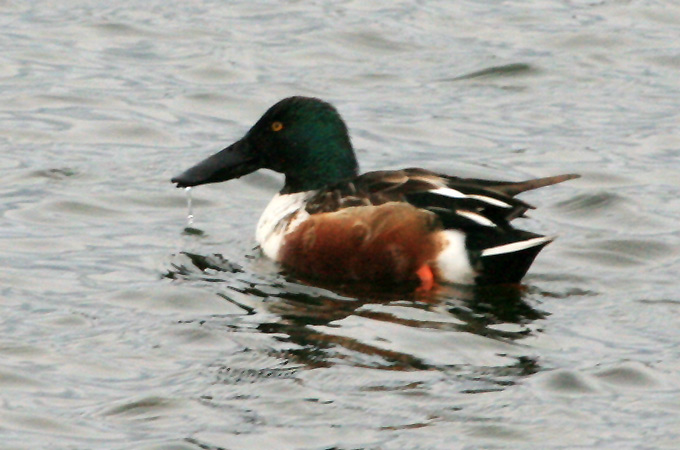

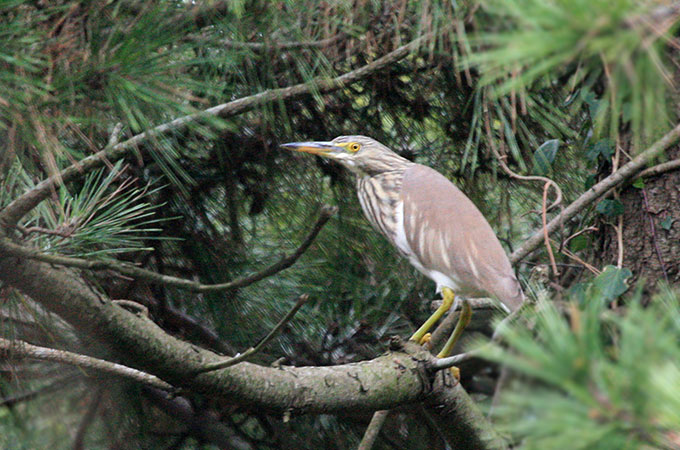
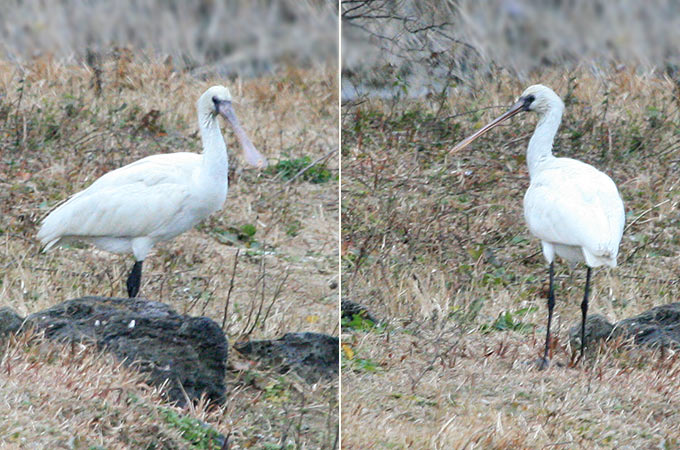
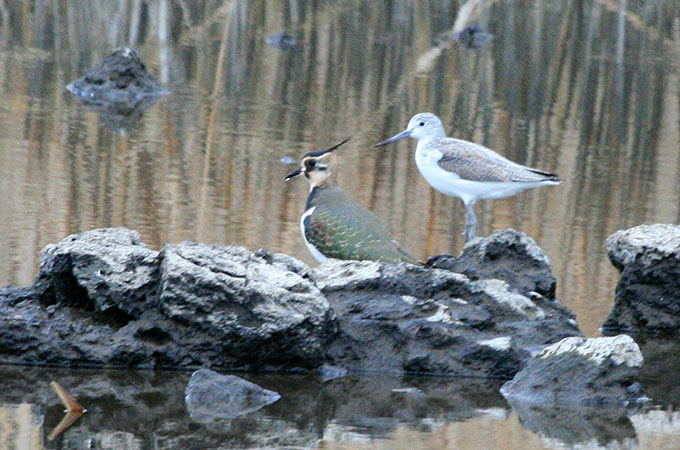

Guryongpo Peninsula, Yeondeok and bay south of Uljin (all East coast), January 4
At Guryongpo, highlights included 500 Ancient Murrelet, 2 Long-billed Murrelet and a Yellow-billed Loon (last found by HK and seen by all); at Yeondeok, a Rough-legged Buzzard (NM only); and south of Uljin, a Glaucous-winged Gull, and a large concentration of alcids, with an exceptional count of 1450 Rhinceros Auklet in a single 20-30 minute scan.
Seogwipo, Jeju island, January 3
A beautiful warm and sunny day in Seogwipo. Thirty species listed for the day, 5 of them lifers for me. Noisy Japanese White-eyes and Brown-eared Bulbuls seemed to populate most of the overhanging trees. Common Sandpipers, lugens White Wagtails, Grey Wagtails, and Blue Rock Thrush were plentiful by the harbor. Two Pacific Reef Herons hunted patiently by some tidal pools. Two pairs of Great Crested Grebes could be seen a bit further out from the shore. Several Common Kingfishers, Little Grebes, Pale and Dusky Thrush, Bull-headed Shrikes, and Large-billed Crows were also seen in the area.
Cheonjiyeon Falls held some interesting species, such as a single Coot, several Gadwall and Common Teal, and at least 30 Mandarin Ducks on the rocks opposite the falls. Several Japanese Bush Warbler were spotted amongst some wet rocky scrub, loosely flocking with Japanese White-eyes. Spot-billed Ducks and Mallards were plentiful at both locations.

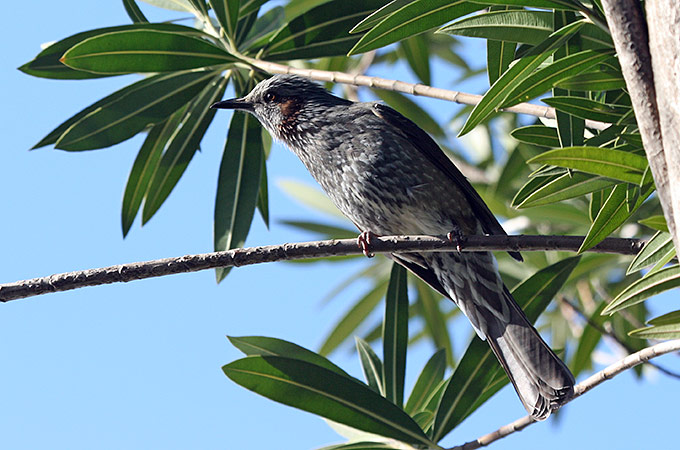
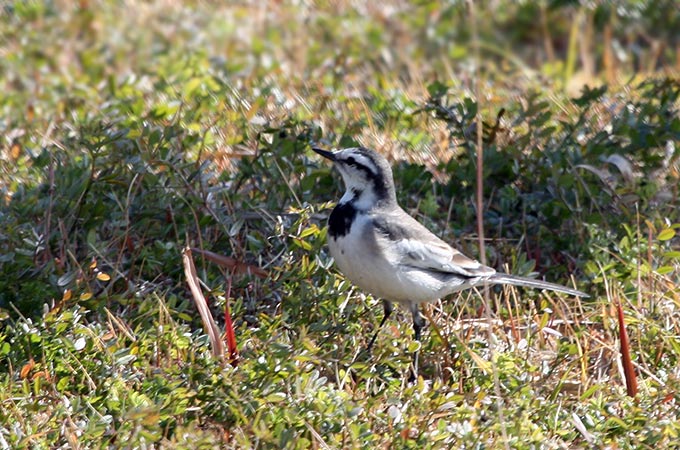

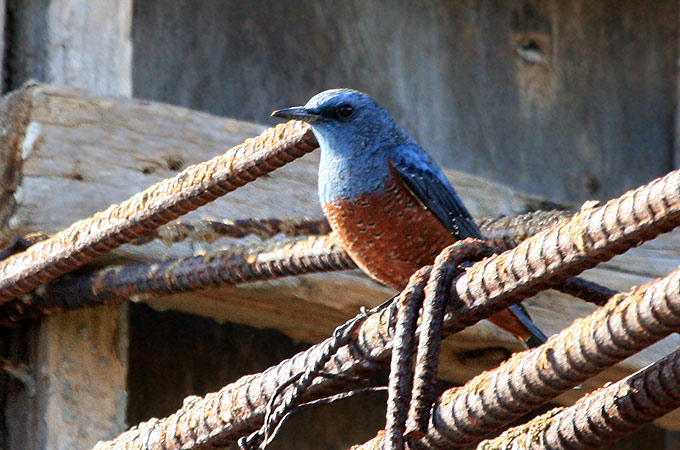
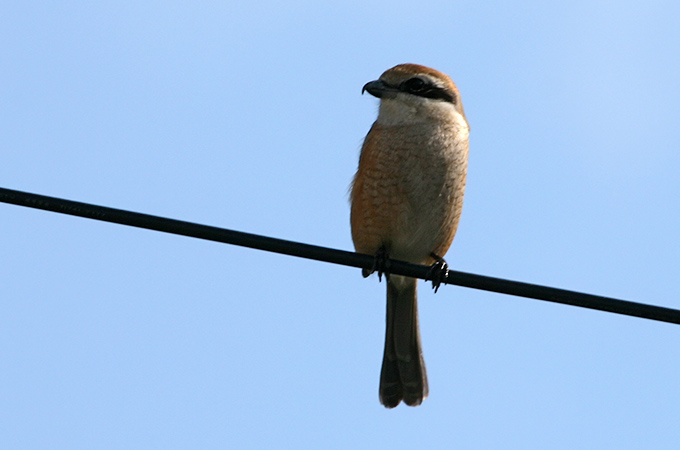

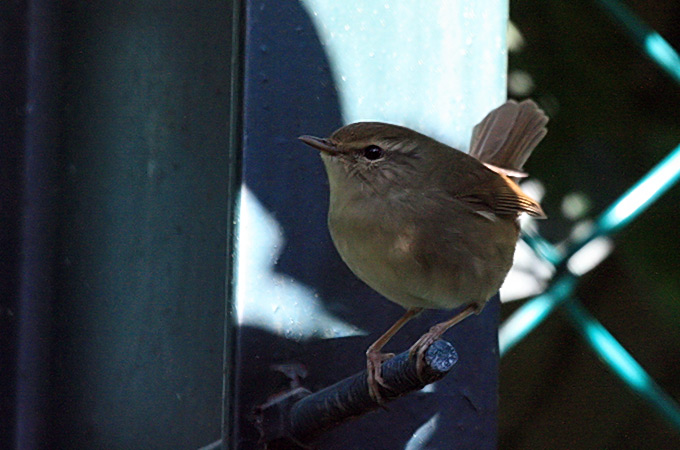
Nakdong Estuary and Joonam, January 3
In beautiful and sunny weather, one first calendar year and one perhaps third calendar year Steller's Sea Eagle, 4+ White-tailed Eagle, a first winter Relict Gull and c. 10 Swan Goose were the obvious highlights at the Nakdong Estuary, though single Red-flanked Bluetail and several Varied Tit and Japanese Pygmy Woodpecker at Dadapo were also much appreciated. At Joonam, close to 100 White-naped Crane, possibly 15,000+ Baikal Teal and huge numbers of people - some obviously enjoying the birds and wetland.
Gomso Bay and SE River, January 2
At Gomso Bay, 101 Saunders's Gull and a single flock of 88 Eastern Oystercatcher were likely new high counts for this site, while single White-tailed Eagle and Red-throated Pipit were also very noteworthy. On the SE river, 95 Mandarin (including one immature male in an intermediate plumage), and no less than 12 extremely wary Scaly-sided Merganser (4 males and 8 females).
National Arboretum, January 2
At Gwangneung today stunning looks at a feeding flock of up to 20 Japanese Grosbeak, tearing at bark or foraging in leaf litter: also good views of a Grey-capped Pygmy Woodpecker, at least 3 Eurasian Bullfinch and a Cinereous Vulture overhead.
Other finches included c. 20 Hawfinch, 11 Siskin and small flocks of Brambling, which were suddenly ambushed by a Eurasian Sparrowhawk. One Dusky and perhaps 10 Naumann's Thrush were frequenting the rose garden, along with a Winter Wren, Goldcrest, Eurasian Nuthatch, Coal Tit, Daurian Redstart, Japanese Pygmy Woodpecker, and group of Magnus Long-tailed Tit. 4 Green Sandpiper were on the stream.
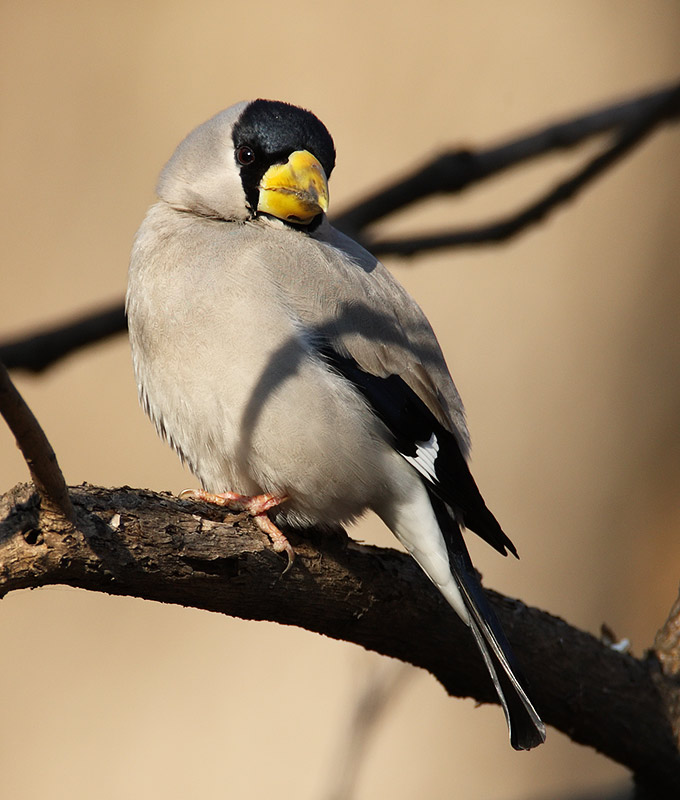

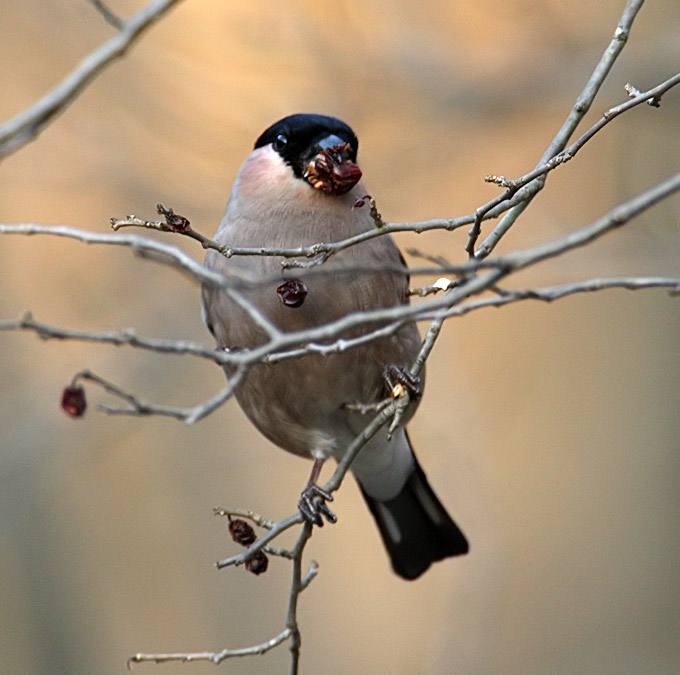
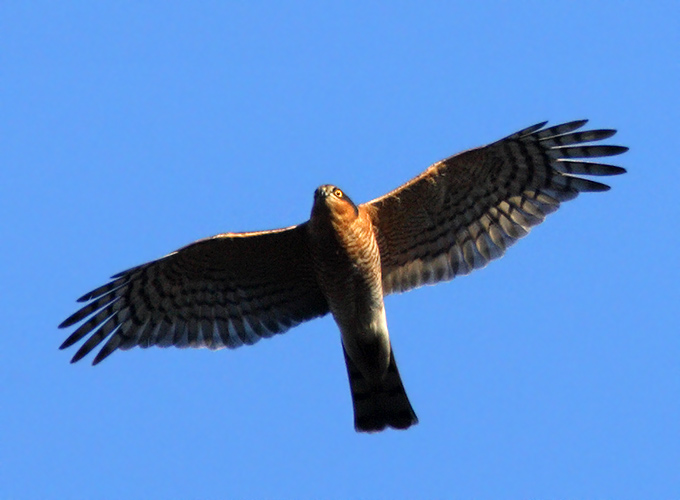
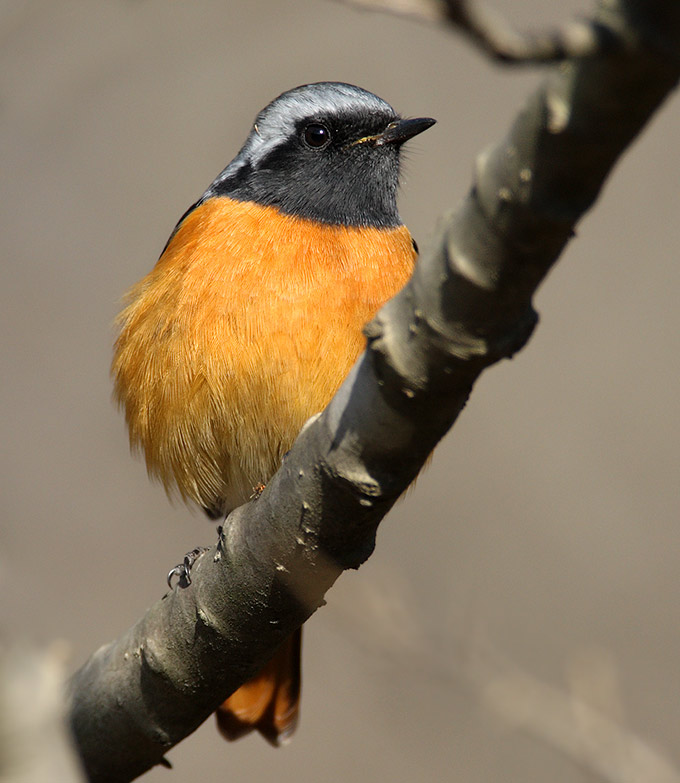
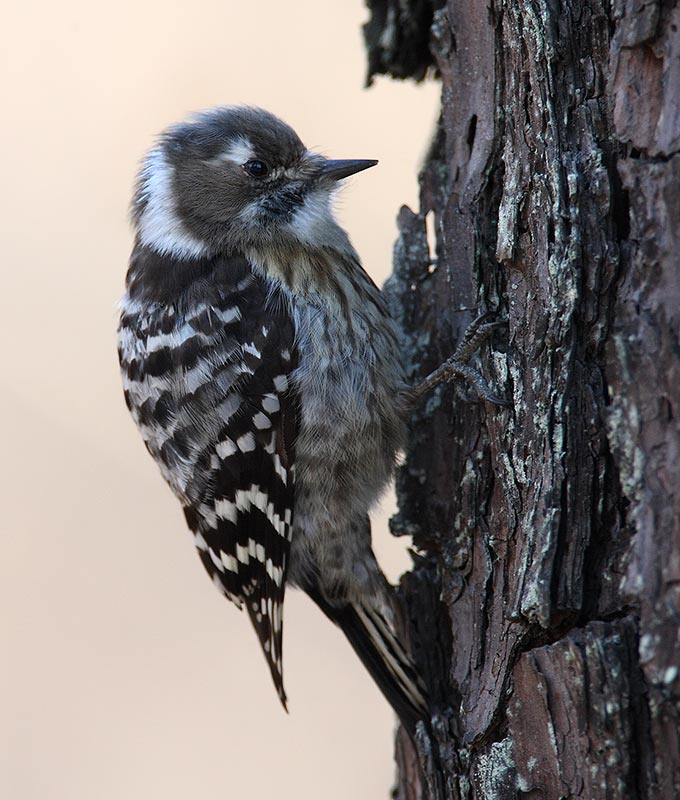
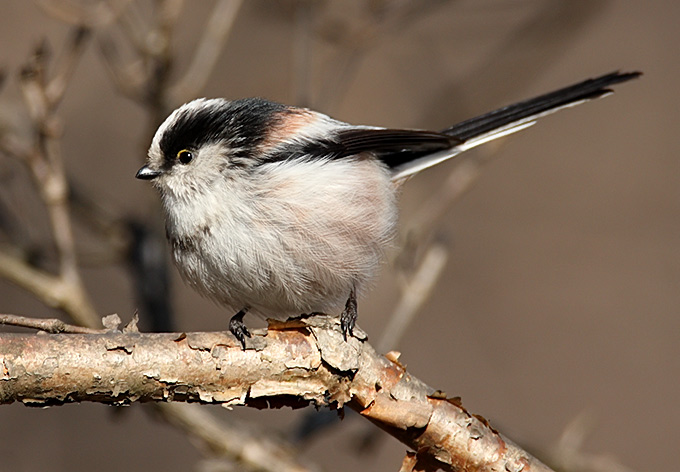
Okksu, January 1
I was certainly blessed on the first day of 2009. I not only saw the sunrise but also 2 Smew adjacent to Okksu stn. On the wooden bridge, going to Seoul forest, I encountered the ?rst wave of 40 Mandarian Duck. The second wave was near the newly formed 'rapids' next to the Ttukseom bridge. Could not resist taking a pic of a more than willing Common Sandpiper.
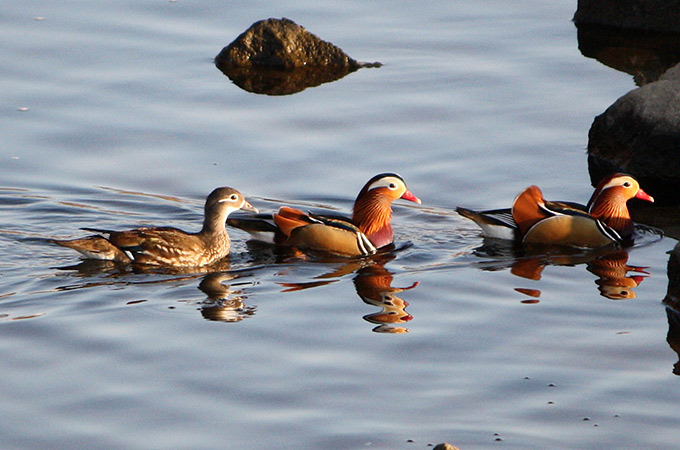
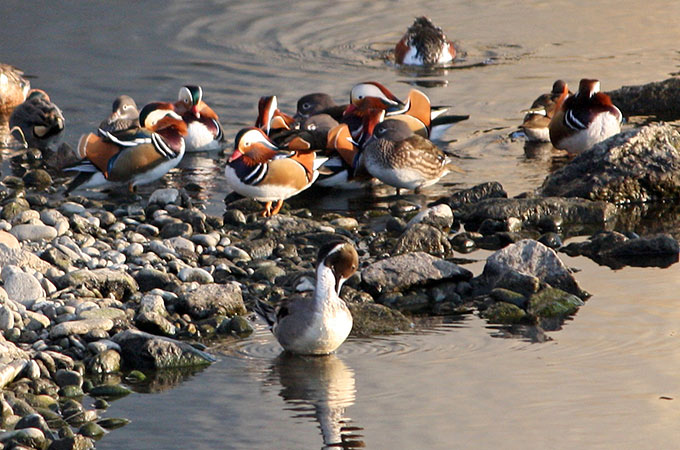

Geum Estuary and River, January 1
With some overnight snow and a morning low of -4C, a day at the Geum. Highlights included 1426+ Eastern Oystercatcher in Janggu Bay, for this species a rather heavily-head streaked though wing-tagged Mongolian Gull AG 33 (first picked up by JL), an adult and first-winter Lesser White-fronted Goose (NM only), and possibly up to 400,000 Baikal Teal (broken up in several "smaller" flocks) on the river.
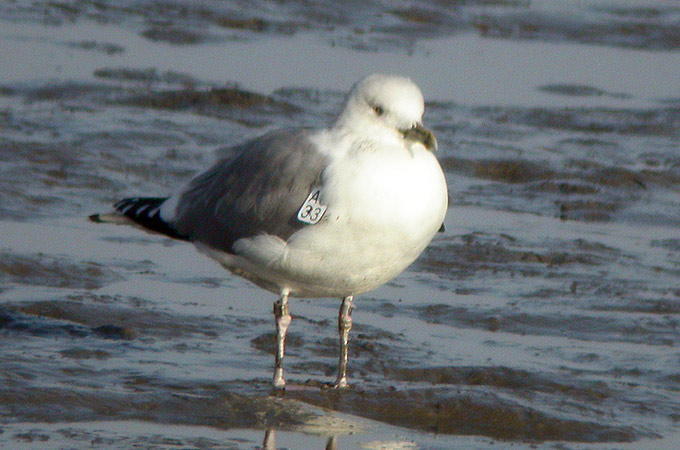
Langenberg, Thomas Langenberg, Johanna Rathgeber-Knan, Armin Schneider) & Nial Moores.
Mangyeung (Saemangeum), Mangyeung Lake, Geum Barrage, Yubu Island, December 31
Some really good birding, with 86 species logged and multiple highlights, on a day of mixed weather, with periods of sunshine and occasionally heavy snow showers and near-freezing temperatures throughout. First well-seen bird of the day was an Upland Buzzard, with a second individual found 10 km west. On the Mangyeung east of Hwapo, excellent views of a feeding male Pallas's Reed Bunting, a calling Japanese Bush Warbler, and a very distant stork sp (either an Oriental or the escaped White Stork from Jeonju Zoo), while in saltmarsh east of Simpo a single flock of at least 260 Buff-bellied Pipit, perhaps the largest flock recorded in Korea to date? At Mangyeung Lake, excellent views of Falcated Duck (c. 100), and good views of a single Baikal Teal and Eastern Great Egret, with 10 probable very distant Swan Goose mixed in with 250 Taiga Bean Geese. At the Geum Barrage, 5 Swan Goose. The shorebird count on Yubu found 910 Eastern Oystercatcher, 648 Grey Plover, 2 Far Eastern and 1555 Eurasian Curlew, 65 Sanderling and 1085 Dunlin. Gulls produced even more interest. 8 Slaty-backed, c. 50+ Taimyr and 80 Saunders's Gull were counted, while outstanding highlight of the day was Korea's first Lesser Black-backed Gull Larus fuscus, with an adult found and photographed at long range (NM), and seen by all of the group. Based on the darkness (blackness) of its upperparts and its incomplete primary moult, it seems likely that this was a nominate fuscus or Baltic Gull. This species, found within the last 3 hours of the last day of the year, appears to have been only the third national first of the year.

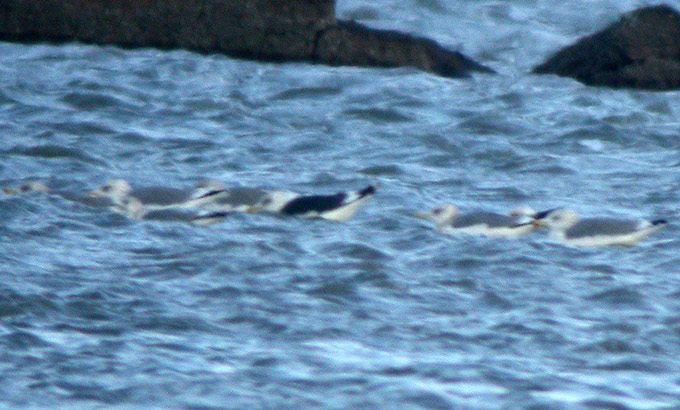
Birds Korea 1108 Ho, 3 Dong, Samick Tower Apt., 148-22, Namcheon-Dong, Su-Young-Gu
Busan, 618-762 Republic of Korea





